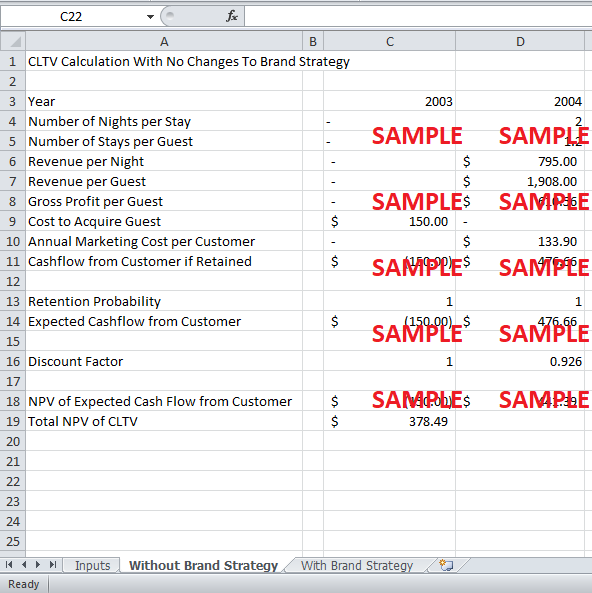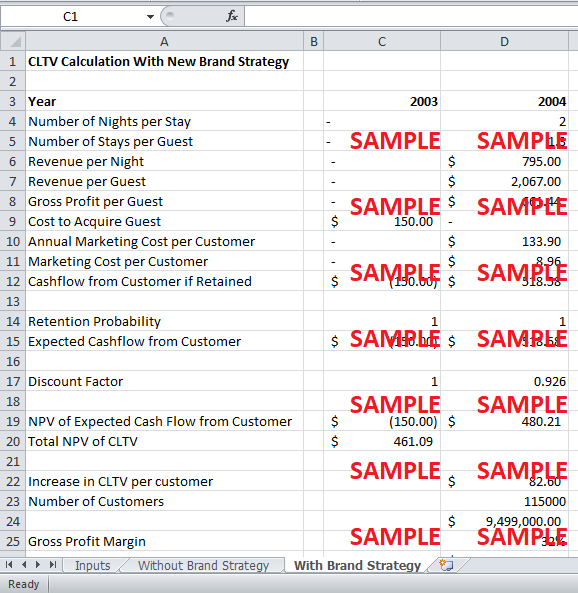Get instant access to this case solution for only $19
Rosewood Hotels & Resorts: Branding to Increase Customer Profitability and Lifetime Value Case Solution
Rosewood Hotels &Resorts is a small sized extravagant private hotel management company. Currently, Rosewood hotels are operating a consortium of 12 discrete and separate branded hotels and resorts in various nations. The management of Rosewood was curious about how to increase the customer retention rate. Moreover, Rosewood is also looking to find solutions to make its customer base more loyal and capitalize on maximizing the revenue generated from its customer base of 115,000 guests. From the inception, Rosewood had constantly permitted every hotel to view as its own distinct brand. However, Rosewood name was only visible as a subdued sub-brand, if at all. Currently the new management at Rosewood was envisaging if the company should considerably enhance the eminence of the corporate identity that is to make a corporate brand image of Rosewood. The main query that lies ahead for the top management of Rosewood is to evaluate whether or not, the prospective economic profits from enhanced customer retention can actually compensate the marketing investment required to implement the corporate branding strategy. The marketing strategy devised by the management needed a total investment of $1 million. The central focus of bringing into the new proposed corporate strategy lies in the quantitative analysis of how customer lifetime value would be affected by a transition from individual or collective branding to the newly devised corporate branding strategy.
The problem at hand for Rosewood Hotels and Resort L.L.C is to decide whether to carry on the current strategy of individual branding or create a holistic corporate branding strategy without affecting the uniqueness and distinctiveness of its individual hotels.
Following questions are answered in this case study solution
-
Case Analysis
-
Cost Benefit Analysis
-
Financial (Quantitative) Analysis
-
SWOT Analysis
- Conclusion
Case Analysis for Rosewood Hotels & Resorts: Branding to Increase Customer Profitability and Lifetime Value
1. Case Analysis
According to the various survey and reports carried out, the Rosewood had managed to get about 40% of returning customers. Although other results suggest that out of the total guests, only 5% had said to check-in in more than one property. Rosewood management foresighted lucrative business opportunity in this prospect since it will benefit to enhance sales revenue by stimulating the Rosewood and create awareness among the customers about other hotel properties owned by the company.
2. Cost Benefit Analysis
The advantages and disadvantages of launching this new corporate branding approach are explained below:
While there are several positives of implementing corporate branding strategies, however Rosewood hotels and resorts’ senior management and board of directors should be cautious while devising its expansion and growth strategy. By linking all the hotel and resort properties under the parasol of one corporate brand, the company should certify that their customers are experiencing similar quality hospitality at all localities. Moreover, the Rosewood executive management should also take care of the local management employees that they are assisting wholly in executing the overall corporate brand strategy.
Rosewood employees should also guarantee to shield the basic core philosophies outlined by the founder of the company, Mrs. Hunt - unchallenging level of individual service and communication among every hostel with its location.
Amalgamation of every hotel with notably secured Rosewood brand would result in customer dissatisfaction. Similarly, immediate changes in culture of the company at a holistic level would lead to unacceptability and irritation among the employees. Therefore, Rosewood management should obviate such consequences by using milder measures to implement it.
3. Financial (Quantitative) Analysis
Besides qualitative analysis, executives of Rosewood are faced with the core challenge of finding a way that will enhance the customer lifetime value in all.
Note: average gross profit is calculated based on the number of repeat guests. It is assumed that there will be no new guests for simpler calculations.
Following the Customer Lifetime Value model, it is forecasted that the quantity of multi-hotel customers will increase twice from 5% to 10% or from 5,750 to 11,500. On the other hand, the figure of repeat customers is also expected to increase from 19,169 to 24,919. Repeat guests are defined as customers who have stayed at more than one different property. Moreover, calculations show that the mean retention rate will increase up to 5%, but the mean gross profit per customer will fall by $9. The fall in profit per customer is due to increase in the overall marketing expenditure.
4. SWOT Analysis
One of the main key strengths for Rosewood lies in the sustainable retention of the guests. However, Rosewood would only be able to benefit from such strength in the long run as the greater number of retained customers will bring in higher value of revenues for the company. Moreover, if Rosewood copes to implement its newly devised corporate strategy successfully then marketing may also become one of the significant strengths of the company. Through this approach, Rosewood would not only be able to reduce its overall marketing expenditure, but it would also be able to benefit from customers positive word of mouth marketing. Furthermore, through this strategy the overall profitability of Rosewood will jump to over $2.6 million, therefore, making both marketing and finance an important strength of the business.
In addition to that, Rosewood should not neglect the weaknesses that might emerge through this strategy. The company has a weak management team which is highly reluctant to adopt any new changes in the organization’s structure. Therefore, Rosewood hotels should be able to overcome such weakness if they have to successfully implement the corporate branding strategy. Rosewood hotels can conduct training seminars and workshops to fulfill the purpose. Moreover, Rosewood hotels should control the limit to which every hotel’s self-brand will be amalgamated with the overall brand of the company.
Another weakness identified in the corporate branding strategy is that the senior management of the company to obviate from implementing the Branded House approach in which individual hotels would be vividly linked to the company brand. However, this weakness can bring potential lucrative opportunities for Rosewood management if they understand implementing Token Endorsement approach to all its hotels including the properties which have strong reputable customer base. For example, the name of Carlyle hotel which is based in New York could be changed to “The Carlyle in New York, Rosewood Hotels” in lieu of “Rosewood Hotel New York”. Rosewood can attract more customers while retaining its current clientele by attaching the brand name and savoring the hotel’s traditional identity.
Get instant access to this case solution for only $19
Get Instant Access to This Case Solution for Only $19
Standard Price
$25
Save $6 on your purchase
-$6
Amount to Pay
$19
Different Requirements? Order a Custom Solution
Calculate the Price
Related Case Solutions
Get More Out of This
Our essay writing services are the best in the world. If you are in search of a professional essay writer, place your order on our website.




